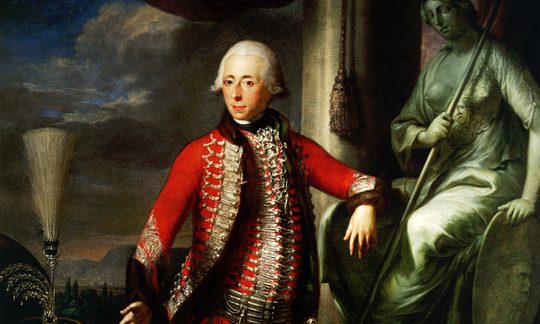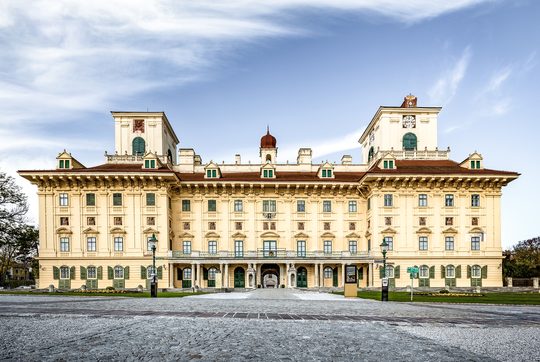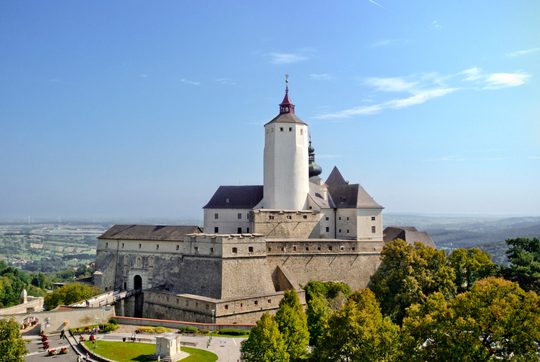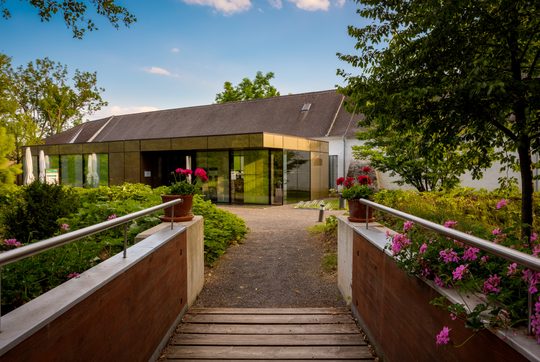Passion for Collecting: The Climax

The opulence of the ‘Fairyland’, combined with methodical collecting activity and enlightened actions following the turn of the revolutionary era, marked the regime of Prince Nikolaus II (1765-1833), the grandson of the ‘splendour-loving’ prince Nikolaus I.
The charismatic prince not only placed the ageing Joseph Haydn again in the service of the Esterházys, with Haydn’s successor, Johann Nepomuk Hummel, he also turned the princely court chapel into a centre of European musical culture.
Haydn annually dedicated his symphonies to Nikolaus II’s sensitive wife Maria Hermenegilde, née Liechtenstein, who was lionised for her beauty, on her name day.
In addition to the Viennese aristocracy, the Esterházy court received foreign diplomats, artists and world travellers at Esterházy Palace, Classically remodelled by Charles Moreau.
On walks, one traversed the palace’s newly designed English garden and rested at one of the Classical constructions and vantage points in the surroundings of the small town of Eisenstadt.
To the present day, the collections of blueprints and drafts of buildings and gardens testify to the idea of cultural landscape surrounding the preferred Eisenstadt residence.
In the bustling city of Vienna, Prince Nikolaus II had meanwhile combined the princely libraries, which had grown to circa 70,000 volumes, and had them inventoried and expanded by a group of librarians, among them Ludwig Wieland, the son of Christoph Martin Wieland.
Together with the library, the collections of minerals, coins, sculptures and the copper engraving cabinet, the painting collection in the family’s garden palace in Mariahilf became a centre of attraction for the malleable population of the Austrian Biedermeier.
For the picture gallery, the Esterházy collection made purchases from the most important collections, such as those of Borghese, Barberini, and Bourke, and was resplendent with names such as Rubens, van Dyck, Correggio, Tintoretto, Lorrain and Goya. Raffael’s ‘Esterházy Madonna’, as it is called today, is surely one of the most prominent works of the Esterházy picture gallery.
Nikolaus II’s collections number among the most important European collections of its time and demonstrate strikingly the family’s high-quality and systematic collecting at the beginning of the 19th century.
In its arrangement according to school, its combination with hand drawings and engravings and above all its mission to ‘improve the general taste’, it incorporates didactically the modern museum conceptions of German idealism.
The passion for collecting art and the bacchanal lifestyle of the highly cultured Prince Nikolaus depleted the seemingly inexhaustible Esterházy family fortune. Upon his death, he left the family artistic treasures of incalculable value as well as debt of disastrous proportions.




